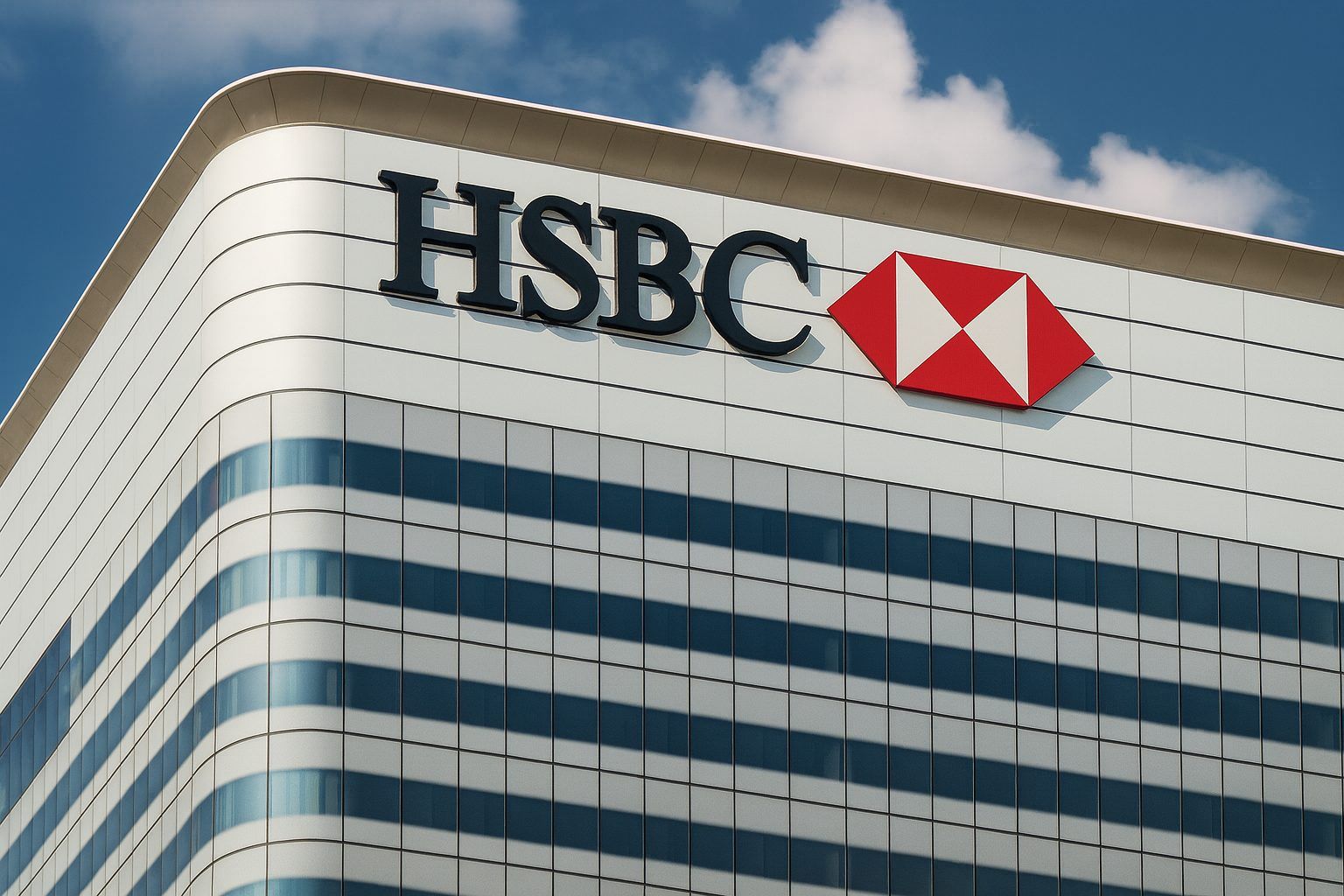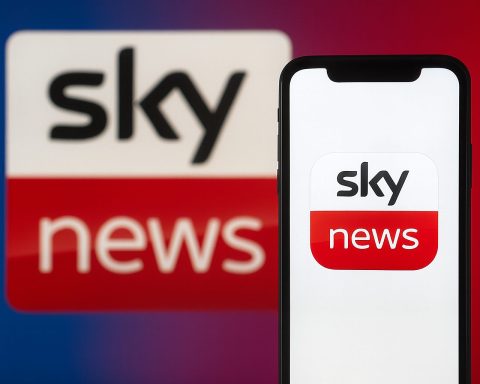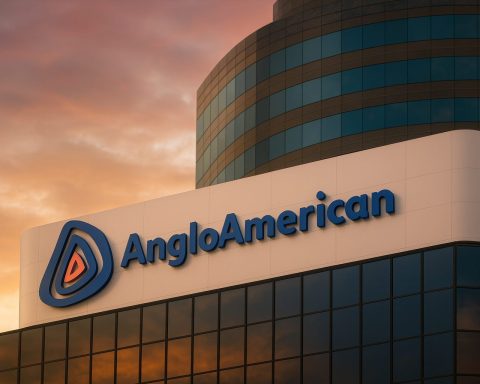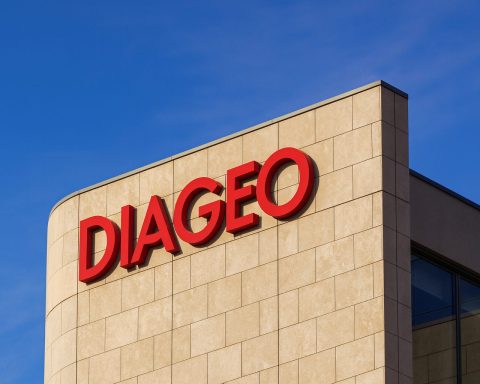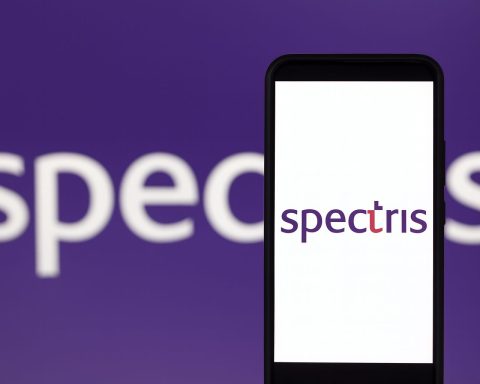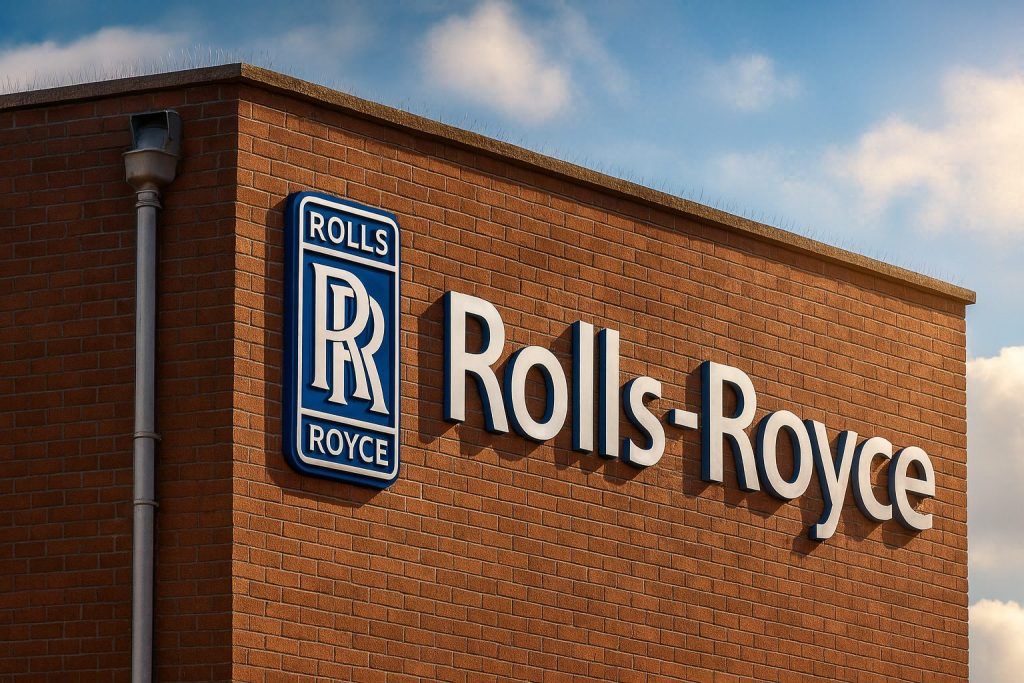On Wednesday, 26 November 2025, HSBC Holdings plc (LSE: HSBA) is back in the spotlight with a flurry of headlines: a major cloud migration for its Hong Kong wallet PayMe, new macro research on India and Asian trade, an updated UK mortgage rate sheet, a tweak to its cross‑border transfer service, and a small insider sale disclosure in the US. All of this comes against the backdrop of strong Q3 2025 results and the ambitious bid to privatise Hang Seng Bank. [1]
HSBC share price today: HSBA steady around 1,050p
In London, HSBC’s primary listing (ticker HSBA) is trading a little above the £10 mark. Data from recent London trading shows the stock around 1,050–1,055p today, with intraday levels reported near 1,051.4p, after opening at about 1,047.8p and touching an intraday high around 1,058.4p. [2]
On HSBC’s own investor site, the latest share analytics update this morning shows: [3]
- London (HSBA): just over 1,050p, modestly up on the day
- Hong Kong (0005.HK): around HK$107–108
- New York (HSBC ADR): roughly $69.5 per ADS
That ADR price is also confirmed by live market data, with HSBC (NYSE: HSBC) quoted at $69.51, up about 0.6% in today’s trading.
From a longer‑term perspective, monthly data suggest that HSBA’s average November 2025 price is a little above 1,100p, compared with around 807p in January 2025 – a rise of roughly 37% year‑to‑date, reflecting the bank’s strong earnings and rising rate backdrop. [4]
Digital milestone: PayMe by HSBC completes migration to AWS
The most eye‑catching HSBC headline today is about PayMe, the bank’s hugely popular Hong Kong mobile wallet.
Amazon Web Services and HSBC announced that PayMe by HSBC has fully migrated its platform to AWS, marking a major step in the group’s digital transformation strategy. [5]
Key points from the announcement:
- Scale: PayMe, launched in 2017, now serves over 3.2 million users and processes billions of transactions annually, allowing instant P2P transfers, bill splitting and payments at more than 34 million merchants across 46 markets via a virtual debit card. [6]
- Performance gains: Post‑migration, PayMe has seen faster application response times (near‑instant transactions) and lower infrastructure costs thanks to more efficient use of cloud resources and AWS security/compliance tooling. [7]
- Speed of innovation: Time‑to‑market for new features has reportedly shrunk from months to weeks, aided by improved CI/CD pipelines. [8]
- Scalability & analytics: The platform can now scale more effectively during peak periods like holidays and promotions, while enhanced analytics help with customer insights and fraud detection. [9]
AWS executives described the move as proof that its cloud can safely host “mission‑critical payment applications” for regulated financial institutions, while HSBC’s Hong Kong technology leadership framed it as foundational for delivering “future‑ready digital experiences” to customers. [10]
For investors, this matters in three ways:
- Reinforces HSBC’s Asia and payments strategy – digital wallets are central to its growth ambitions in Hong Kong and the Greater Bay Area.
- Supports efficiency and returns – better scalability and lower infrastructure costs directly support management’s mid‑teens RoTE target. [11]
- Competitive moat – a widely used, cloud‑native wallet strengthens HSBC’s franchise against both global and regional fintechs.
Macro views: India’s “emerging states”, Asia trade pulse and the US equity bull run
India: emerging states powering growth, but populism a risk
In a widely cited research note, HSBC economists argue that India’s economic momentum is shifting towards lower‑income “emerging states” such as Bihar, Uttar Pradesh, Rajasthan and Assam, which are now growing faster and narrowing the gap with richer regions. [12]
According to the report, highlighted in The Times of India: [13]
- Public capital expenditure in these states has surged, improving infrastructure and attracting private investment.
- Between FY23 and FY25, Bihar’s real GSDP grew about 10.3% and Uttar Pradesh’s about 9%, outpacing India’s national average of roughly 7.8%.
- In Bihar, industry’s share of GVA has, for the first time, overtaken agriculture, while Uttar Pradesh has seen a jump in exports of electronics and IT services.
HSBC frames this as classic Solow‑Swan catch‑up growth: poorer regions with low capital‑to‑labour ratios can grow faster as investment ramps up. However, the bank warns that expanding cash‑transfer schemes and other populist measures could eventually crowd out capex, especially if tax revenues soften and fiscal deficits stay high. [14]
The policy takeaway: India’s elevated growth trajectory is not guaranteed; it depends on preserving investment‑led growth rather than shifting too far toward short‑term giveaways.
Asia trade pulse: less policy fear, more intra‑regional supply chains
A separate HSBC Global Trade Pulse report, covered today by finews.asia, highlights improving sentiment among Asian corporates: [15]
- 68% of Asian respondents feel more certain about the impact of trade policy than six months ago.
- Only about 13% now expect a negative impact on revenue from trade policy over the next two years, down from 18%.
- Firms are reconfiguring supply chains within Asia, with Southeast Asia the most popular destination for increased sourcing and production, followed by East/North Asia and South Asia.
HSBC’s regional head of global trade solutions notes that tariff uncertainty has “galvanised” Asia, pushing companies to adapt and diversify rather than retreat from global trade. [16]
For HSBC, this is bullish: it is heavily exposed to trade finance, transaction banking and cross‑border cash management across Asia, so tighter intra‑regional linkages support fee income and lending volumes.
US market & AI: “We don’t think the US is in a bubble”
On the wealth‑management side, Willem Sels, global CIO at HSBC Private Banking and Premier Wealth, used a media briefing (reported today by finews.asia) to push back against the idea that US equities and AI stocks are in a bubble. [17]
Highlights from Sels’ comments: [18]
- AI leaders like Nvidia have surged, but HSBC believes the rally is largely driven by earnings growth, not multiple expansion.
- Valuations of the so‑called “Magnificent 7” relative to the MSCI World are around their multi‑year average, not extreme.
- HSBC expects AI to remain a key driver into 2026, but is managing concentration risk by diversifying into other sectors and regions.
- The main risks are fewer‑than‑expected Fed rate cuts and potential labour‑market softness, rather than an outright growth collapse.
The bank remains slightly overweight US equities, but emphasises diversification, including into Asia’s own AI ecosystem and higher‑dividend plays. [19]
Retail banking & payments: UK mortgage rates and Bahrain transfer change
UK: detailed HSBC mortgage rates for existing customers
Mortgage Introducer (mpamag.com) has published an updated rate sheet for HSBC’s existing UK mortgage customers, showing a wide range of two‑, three‑, five‑ and ten‑year fixed deals, plus trackers, for customers switching to a new rate. [20]
Examples from the current tables (all rates approximate and subject to eligibility):
- 2‑year fixes for existing customers from around 4.1–4.8%, depending on loan‑to‑value (LTV) and whether a fee‑free or fee‑paying product is chosen. [21]
- 3‑year fixes clustering around 4.0–4.5%, again varying by LTV bands and product fees. [22]
- 5‑year fixes from roughly 3.8–4.4% for standard and Premier products at lower LTVs, rising above 4.7% at higher LTVs or fee‑free options. [23]
- 10‑year fixes mainly in the 4.4–4.9% bracket. [24]
The article notes that existing HSBC borrowers may, in some cases, access slightly better or at least highly competitive “product transfer” rates, especially as lenders jostle for refinancers in a cooling but still expensive UK housing market. [25]
For shareholders, this underscores:
- Competition is intense, which can squeeze margins.
- But higher absolute rate levels still support solid net interest income, aligning with HSBC’s 2025 banking NII guidance of about $43bn or better. [26]
Global Transfers: Bahrain restrictions from today
On the operational side, HSBC Hong Kong has quietly updated its Global Transfers service. A notice on the bank’s site states that Global Transfers no longer support fund transfers to third‑party Bahraini HSBC accounts from 23 November 2025, and to self‑named personal HSBC accounts in Bahrain from 26 November 2025. Customers will instead have to use telegraphic transfers for Bahrain. [27]
The bank stresses that Global Transfers remain instant and fee‑free for self‑named and third‑party HSBC accounts across a wide list of other countries and currencies, including the UK, US, Hong Kong, and multiple Asian and Middle Eastern markets. [28]
While not financially material, it’s a reminder that regulatory and operational constraints can reshape cross‑border offerings, especially in smaller markets.
US disclosure: a small insider sale by Rep. Lisa C. McClain
In the US, MarketBeat flagged a fresh political‑insider disclosure: Representative Lisa C. McClain (R‑Michigan) reported selling between $1,001 and $15,000 of HSBC Holdings plc (NYSE: HSBC) shares in her Charles Schwab brokerage account on 14 October, in a filing made public on 21 November. [29]
The article also summarises key metrics for the ADR: [30]
- HSBC ADRs opened today around $69.45, implying a market cap near $239bn.
- The ADR sports a trailing P/E ratio around 14.6 and a PEG ratio of about 1.3, with beta around 0.64, indicating lower volatility than the broader market.
- The bank recently reported US‑GAAP EPS of $1.80 for the latest quarter, beating a consensus of $1.65, on revenue of about $17.9bn.
- A quarterly dividend of $0.50 per ADR (equivalent to $0.10 per ordinary share) is scheduled to be paid on 18 December 2025, implying an annualised yield near 2.9% at current ADR prices.
Analyst data in the same piece show a “Moderate Buy” consensus and an average price target near $63 – slightly below the current ADR price, suggesting that much of the recent re‑rating is already reflected in the shares. [31]
The McClain sale itself is tiny relative to HSBC’s market cap and looks more like routine portfolio management than a directional call on the bank.
Big picture: Q3 2025 earnings, Hang Seng Bank bid and legal provisions
Although not new today, HSBC’s Q3 2025 results and strategic moves are crucial context for understanding the stock’s current level.
From HSBC’s official 3Q 2025 update: [32]
- Profit before tax:$7.3bn for the quarter ended 30 September 2025.
- Revenue:$17.8bn.
- Dividend:$0.10 per ordinary share for 3Q25 (equivalent to $0.50 per NYSE‑listed ADR).
- RoTE: Annualised 13.9% for the first nine months of 2025, 17.6% excluding notable items.
- Banking net interest income (NII):$11.0bn in 3Q25.
- CET1 ratio:14.5% as of 30 September 2025.
Management upgraded guidance, now expecting mid‑teens or better RoTE for 2025 (ex‑notables) and banking NII of $43bn or more, while reaffirming a CET1 target range of 14–14.5% and a 50% dividend payout ratio (ex‑material items). [33]
However, the quarter also included $1.4bn in legal provisions, mainly for historical matters: [34]
- Around $1.1bn related to a Luxembourg court ruling in a long‑running case tied to Bernard Madoff’s Ponzi scheme, where a fund alleged HSBC’s custodial failures. [35]
- About $0.3bn relating to historical trading activities in HSBC Bank plc. [36]
Reuters notes that the Madoff‑related provision is expected to shave about 15 basis points off HSBC’s CET1 ratio, and the ultimate financial impact could still differ from the bank’s estimate as appeals continue. [37]
Hang Seng Bank: big capital use, buybacks paused
On 9 October 2025, HSBC proposed a HK$106.1bn (about $13.6bn) deal to buy out minority shareholders in Hang Seng Bank, offering HK$155 per share for the 36.5% it does not already own. [38]
Key points from the announcement and subsequent commentary: [39]
- Hang Seng Bank’s shares jumped about 26% on the news, while HSBC’s stock fell roughly 6% as investors digested the capital impact.
- HSBC expects a CET1 hit of around 125 basis points on day one if the deal completes, potentially taking CET1 temporarily below the 14–14.5% target range.
- Management has said share buybacks will be paused for several quarters while capital is rebuilt through retained earnings, with any decision to restart buybacks taken quarter by quarter.
Taken together, the legal provisions plus Hang Seng bid explain why:
- Headline profit growth looks weaker than underlying operating trends.
- The balance sheet remains strong, but capital is being actively redeployed rather than returned via buybacks in the near term.
Valuation snapshot after today’s moves
Across different data providers, HSBC’s valuation now looks roughly as follows:
- Trailing P/E (TTM) for HSBA is around 14x, based on recent London prices and reported earnings. [40]
- Forward P/E is lower, at about 9x based on forecast earnings, implying the market expects underlying profit growth as one‑off legal hits roll off. [41]
- Price‑to‑book (P/B) varies by methodology, but sits somewhere between ~0.9x and ~1.3x:
- A separate analysis pegs free cash flow yield near 12–13%, again above risk‑free rates and consistent with a high single‑digit to low double‑digit cost of equity assumption. [45]
- Third‑party data sets HSBC’s return on equity around 13% annually, with TTM ROE just under 10%. [46]
Put simply, HSBC no longer looks “dirt cheap” after a strong run in 2024–25, but it still trades on:
- A modest earnings multiple versus global quality banks, and
- A near‑book valuation despite delivering mid‑teens RoTE (ex‑one‑offs) and generous dividends. [47]
Other brand and capital‑markets snippets today
A few smaller but notable HSBC‑linked items from 26 November 2025:
- Women’s rugby & HSBC SVNS: World Rugby announced that trials of a new size‑4.5 ball for women’s rugby will be extended to the HSBC SVNS Series, reinforcing HSBC’s long‑running sponsorship of rugby sevens and its brand positioning around inclusivity and global sport. [48]
- ETF & structured‑product filings: Routine RNS and prospectus documents reference 26 November 2025 as the valuation or final‑terms date for certain HSBC‑linked ETFs and structured products, including an HSBC Global Agg Bond UCITS ETF NAV update and iShares Physical Metals Plc final terms referencing HSBC as issuer or counterparty. [49]
Individually, these are not price‑moving, but they show HSBC’s breadth across capital markets, sponsorships and asset management.
Key takeaways for investors on 26 November 2025
- Operational momentum is strong: Q3 numbers show robust revenue and net interest income, with RoTE near or above mid‑teens on an underlying basis, even after heavy legal provisions. [50]
- Digital and payments strategy is advancing: The full migration of PayMe to AWS materially improves scalability and efficiency in a strategically critical market (Hong Kong), strengthening HSBC’s regional payments franchise. [51]
- Macro research paints a constructive Asia picture: HSBC sees Indian “emerging states” and intra‑Asia trade flows as key growth engines, while its wealth CIO remains positive on US equities and AI, albeit with risk management around Fed policy. [52]
- Retail pricing remains supportive but competitive: UK mortgage rate sheets show that while the rate cycle has cooled, pricing still supports healthy NII, even as borrowers shop aggressively for deals. [53]
- Capital and legal overhangs are real but manageable: The Hang Seng Bank bid and Madoff‑related provision weigh on CET1 and headline earnings, but management is signalling confidence by maintaining RoTE and NII targets while temporarily pausing buybacks. [54]
- Valuation remains reasonable: After a ~35–40% rally this year, HSBC is no longer in deep‑value territory, but still trades at around 1x book and under 10x forward earnings, with a solid dividend stream backed by strong cash generation. [55]
As always, this article is for information only and does not constitute investment advice. Investors should consider their own objectives and risk tolerance, and, where appropriate, consult a qualified financial adviser before buying or selling HSBC shares or ADRs.
References
1. ffnews.com, 2. www.investing.com, 3. www.hsbc.com, 4. www.digrin.com, 5. ffnews.com, 6. ffnews.com, 7. ffnews.com, 8. ffnews.com, 9. ffnews.com, 10. ffnews.com, 11. www.hsbc.com, 12. timesofindia.indiatimes.com, 13. timesofindia.indiatimes.com, 14. timesofindia.indiatimes.com, 15. www.finews.asia, 16. www.finews.asia, 17. www.finews.asia, 18. www.finews.asia, 19. www.finews.asia, 20. www.mpamag.com, 21. www.mpamag.com, 22. www.mpamag.com, 23. www.mpamag.com, 24. www.mpamag.com, 25. www.mpamag.com, 26. www.hsbc.com, 27. www.hsbc.com.hk, 28. www.hsbc.com.hk, 29. www.marketbeat.com, 30. www.marketbeat.com, 31. www.marketbeat.com, 32. www.hsbc.com, 33. www.hsbc.com, 34. www.hsbc.com, 35. www.reuters.com, 36. www.hsbc.com, 37. www.reuters.com, 38. www.reuters.com, 39. www.reuters.com, 40. www.wisesheets.io, 41. www.gurufocus.com, 42. www.gurufocus.com, 43. companiesmarketcap.com, 44. api.londonstockexchange.com, 45. api.londonstockexchange.com, 46. mlq.ai, 47. www.hsbc.com, 48. www.world.rugby, 49. www.tradingview.com, 50. www.hsbc.com, 51. ffnews.com, 52. timesofindia.indiatimes.com, 53. www.mpamag.com, 54. www.hsbc.com, 55. www.digrin.com
